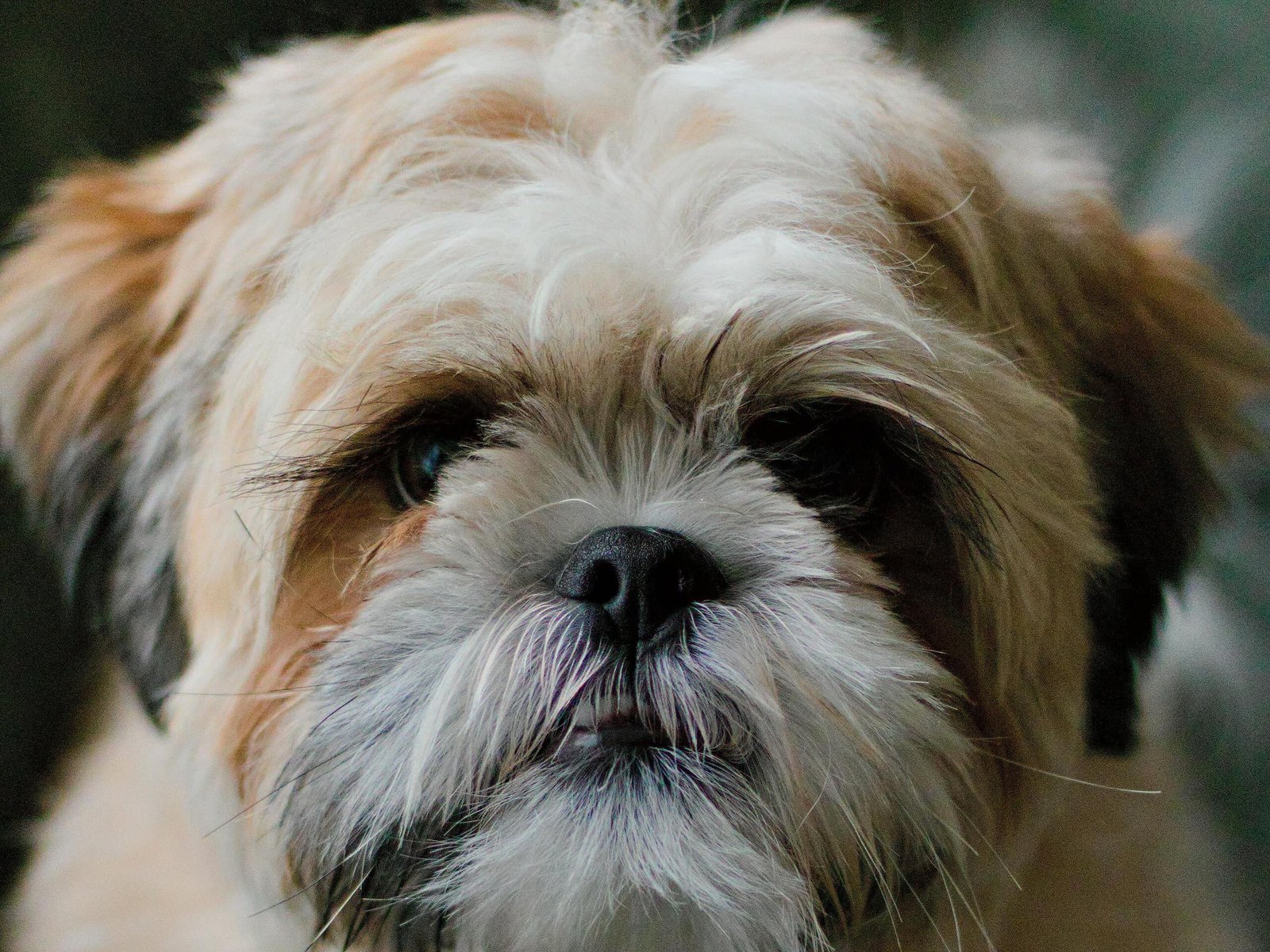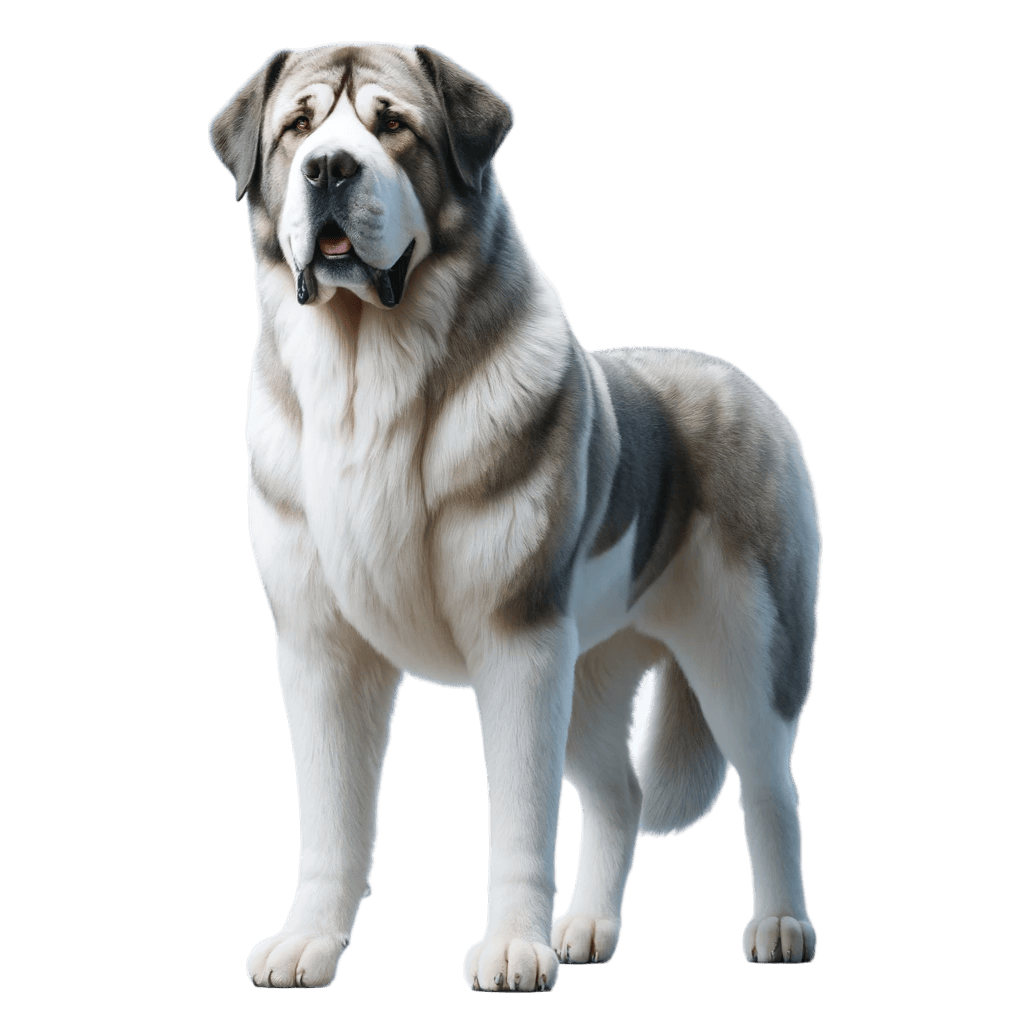SHIH TZU
A brief overview
Shih tzu is a small dog breed originating in Tibet, valued for its charming and friendly disposition. Characteristic for representatives of this breed is a long, thick coat, which requires regular grooming, and a stocky body with short legs. Shih tzu are sociable, loyal and mostly get along well with both people and other animals, which makes them excellent companion dogs.

Table of contents
Country of origin
The dog originated in Tibet.

BREED CHARACTERISTICS
Weight
4.5 – 7.5 kg.
Height
23 – 27 cm.
Type of hair
Long, thick and straight.
Life expectancy
10 – 18 years.
Health
Frequent problems with the eyes, ears, teeth, respiratory system and the occurrence of food and environmental allergies.
Character
Intelligent, lively, alert, friendly but independent.
Need for exercise
Moderate.
FCI classification
Group 9 (companion and toy dogs), section 5 (Tibetan breeds).
Price
4,500 – 6,500 PLN, up to as much as 10,000 PLN (ZKwP).
History and origins
Shih tzu originated in Tibet, but the breed developed in China. They were companion dogs in the imperial courts. In the West, the first shih tzu came to the West in 1912, while in Britain in 1931. In Poland, the first representative of these dogs appeared in the early 1980s.
Appearance and physique
Shih tzu are small dogs with a height of 23-27 cm and a weight of 3.5-7.5 kg. Their head is round, their eyes are widely spaced, their nose is dark and slightly upturned, and their muzzle is short. The back is straight, the loins are strong, and the chest is broad and deep. The limbs are short, and the tail is set high. The length of their body from the withers to the root of the tail is greater than the height at the withers. They are heavily furred, with long and dense coats and moderately abundant undercoat. The hair on the head creates a characteristic chrysanthemum effect. All colors are acceptable in them, but most often they will turn out shades of white, beige, brown and gray.
Temperament and behavior
Shih tzu are characterized by their friendly, cheerful and sociable disposition, which makes them excellent companions for families and the elderly. They are extremely loyal to their owners and often form strong bonds with family members. Despite their small size, they are brave and can be quite stubborn. Shih tzu are also affectionate and like to be the center of attention, enjoying petting and human proximity. They also tend to be quite barky.

Training and activity
Shih tzu are sociable and willing to cooperate with humans. However, training can be a challenge due to their independent and sometimes stubborn nature. So consistency and patience are key. Attention should also be paid to proper socialization with people and other dogs, as well as building self-confidence, as there are timid individuals among shih tzu. However, these dogs do not need very long walks or intense physical activity. They like, above all, to accompany their human.
Health and life expectancy
Shih tzu are most often brought to veterinary surgeries for eye problems such as conjunctivitis, corneal ulceration and dry eye syndrome. Ocular prolapse also occurs in them. This breed also often has a malocclusion and a predisposition to rapid tartar accumulation. Ear infections are also common. Another potential problem for the shih tzu is brachycephalic breed syndrome, characterized by snoring, panting, coughing, shortness of breath and exercise intolerance. In some cases, surgical intervention may be required. The life expectancy of a shih tzu is 10-18 years.

Care and custody
Shih tzu mainly need daily combing of the coat and washing of the eyes. The hair above the eyes, meanwhile, may need to be trimmed or tied back to prevent irritation. Teeth and ears also need regular cleaning. Bathing once every 3-4 weeks is also recommended to keep the coat clean and in good condition.
Diet and nutrition
Food allergies are quite common among shih tzu, which may require diagnosis in the form of elimination diets and subsequent appropriate dietary adjustments. Dogs of this breed also tend to be overweight, so controlling portion sizes and avoiding overfeeding is crucial.
Maintenance costs
The cost of maintaining a shih tzu can be significant, due to the preventive health care and possible treatment of conditions the breed is prone to. It is important to be prepared for this.

Buying or adoption
When choosing a kennel, the first thing to pay attention to is the health of the dog. In good kennels, eye examinations and genetic tests for the most common genetic diseases in shih tzu are standard practice. Adoption can be a great alternative, there is no shortage of breed-type dogs in shelters and foundations. However, be sure to carefully inquire about the dog’s history, with particular attention to health.
Own breeding
Running your own shih tzu kennel is a task that requires a lot of knowledge, commitment and responsibility. Particularly important is health prevention and testing, so as to select dogs that are healthy and free of genetic diseases. This can require a considerable investment of time and money. One should also not forget about the demanding care of dogs of this breed.
Did you know?
Summary
Through the eyes of a behaviorist
The Shih tzu is a wonderful companion dog, enjoying contact and cooperation with humans. However, its training can be difficult, due to its independence and stubborn nature, as well as the timidity that occurs in some individuals. It is therefore necessary to adhere to regular exercise, patient and consistent parenting, as well as ensure that the dog of this breed is properly socialized.
Through the eyes of a veterinarian
Shih tzu is a breed burdened with the possibility of numerous diseases. So be prepared for this and do not forget about preventive health care from an early age, as well as regular care of the dog’s eyes, ears, and teeth.

